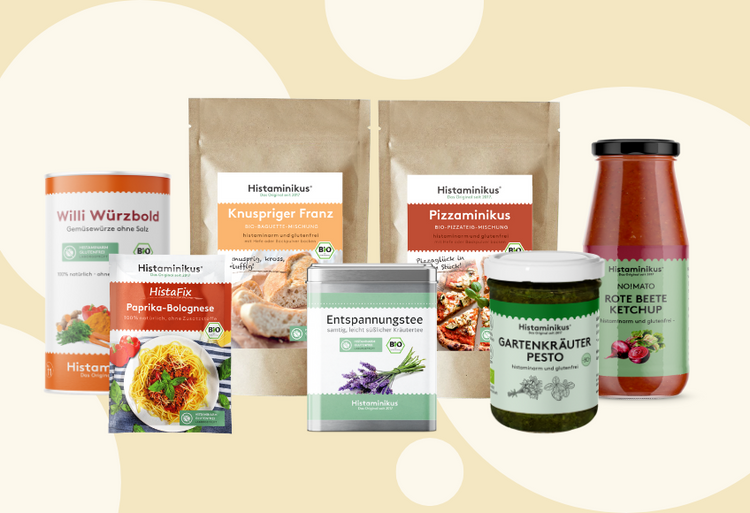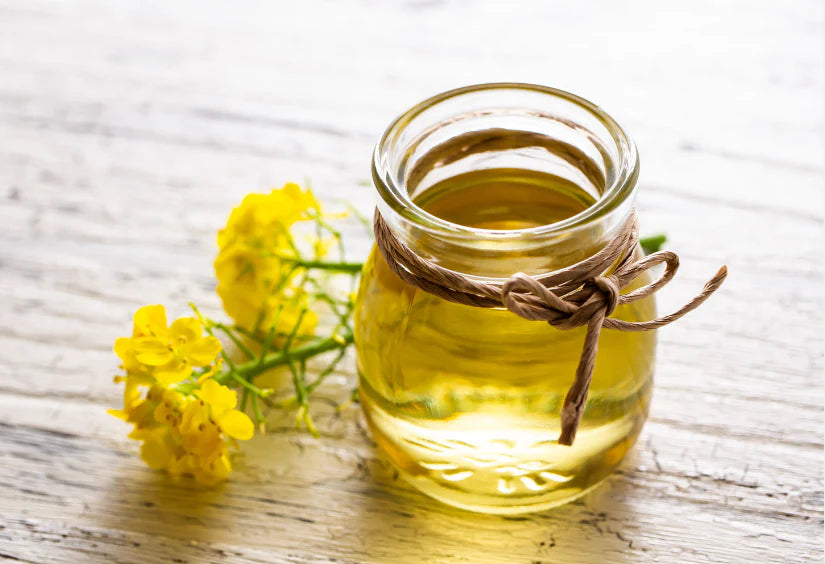
What food oils in histamine intolerance?
With histamine intolerance, you often face the question of which oils you can use in the kitchen at all. Because not every oil is well tolerated and not every oil is healthy. There are a few things to consider when choosing the oils correctly and this also applies to very healthy people. Because the wrong use of oils can quickly lead to symptoms and intolerance reactions. Therefore, with this article we clarify which oils are compatible with histamine intolerance for you and how you use it correctly.
To do this, we first make a little digression into the world of fats. An oil is nothing more than a liquid fat.
High quality fats are indispensable and vital. They are important for our brain, our nerves and for every single cell. An imbalance in the fat balance can lead to a wide variety of symptoms And even trigger serious diseases. This includes hair loss, poor wound healing, high blood pressure, infertility, skin problems, liver or kidney dysfunction and neurological disorders. Diseases such as cardiovascular diseases, allergies and all chronic inflammatory processes can also be favored by an imbalance.
What functions have fats in the body
- Fats are the most energy -rich nutrient in our food. They are energy suppliers and energy storage.
- Fats have certain construction functions in our body. Our nervous system consists of approximately 40% fat, for example.
- Fats have a protective function and act as an insulating layer, as well as as a protective layer of some organs.
- Fats have a soldering function for fat -soluble vitamins such as E, D, K, A. Without fats, these vitamins could not be absorbed.
The fatty acids are natural components of the fats. They are divided into three categories.
- Saturated fatty acids
- Simply unsaturated fatty acids (also called omega-9 fatty acids)
- Piledy fatty acids (are divided into omega-3 and omega-6 fatty acids)
The fatty acids
1. Saturated fatty acids
Saturated fatty acids usually come in Animal foods before, but also in Palm, coconut oil, cocoa butter or ghee. You have a higher melting point and can therefore can be used for cooking and roasting. With histamine intolerance, you can use all the fats mentioned here for roasting and cooking. The oils can be stored at room temperature. They are not as sensitive as the unsaturated fatty acids.
Multicolumn
-
2. Simply unsaturated fatty acids
This includes Vegetable cold -pressed oils such as olive oil, avocado, nuts, seeds and dairy products. They are sensitive to heat, light and oxygen and therefore susceptible to harmful oxidation processes. These oils should therefore Dark and cool to be stored. Simply unsaturated fatty acids may not be heated over 180 ° C. With histamine intolerance, you can use oils from compatible nuts and of course a high -quality cold -pressed organic olive oil. Even if you eat seeds such as chia seeds or flax seeds, you supply your body with important simply and polyunsaturated fatty acids. Another feature of this oils is that they become liquid at room temperature and in the refrigerator.
-
3. Previous fatty acids
Belong to this group of fats Vegetable cold -pressed oils such as sunflower oil, thistle oil, wheat germ oil, linseed oil, hemp oil, rapeseed oil, seeds and nuts. They are very heat, light and oxygen and are allowed not heated over 130 ° C. When heating such oils above 130 ° C, the trans fatty acids that are harmful to health and inflammation are created for the body. These oils should Dark and cool stored become. A special feature of this oils is that they are liquid both at room temperature and at room temperature.
Fair oils - anti -inflammatory or anti -inflammatory?
When choosing the right oils, you have to consider that histamine is an inflammatory mediator. As we have learned above, a wrong ratio of fatty acids in our body can promote and play any kind of inflammatory processes. Therefore, with histamine intolerance, it is important not to use oils that promote inflammation. The problem is that modern diet always leads to a false fatty acid ratio and therefore Inflammatory processes on the agenda are. Your oils should therefore High quality, holistic, organic quality and as unprocessed as possible. Only then are oils healthy and balanced.
Any Industrial processing destroy the balance of fatty acids And can thus lead to oxidation processes and the development of harmful trans fatty acids. Trans fatty acids also contribute to inflammatory processes and often hide behind the following terms:
- Partially hardened fat
- Hardened fat
- Vegetable fats
- They are included in almost all ready meals.
In order to avoid inflammatory processes, the right ratio of omega-6 to omega-3 fatty acids and on high-quality and natural processing depends on oils and fats. The correct ratio of omega-6 to Omega-3 is approximately at 3 to 5: 1.
A surplus Omega-6 fatty acids contributes to the formation or the Macification of inflammatory processes at. Arachidonic acid is formed by the surplus. The arachidonic acid is the fuel for inflammation. Inflammatory hormones are formed from it.
The The Omega-3 fatty acids are opponents to Omega-6 fatty acids. You are for yours anti -inflammatory property known and can therefore alleviate and block inflammatory processes. As already mentioned above, the solution is not now to only consume omega-3 fatty acids. The answer consists in the correct ratio of the two fatty acids.
Which oils in histamine intolerance?
The following oils are compatible with histamine intolerance and have a good fatty acid ratio, i.e. they relieve inflammatory processes.
Oils only for the cold cuisine (cold -pressed and in organic quality):
- Linseed oil (1 tablespoon of the Omega-3 fatty acid requirement) compensates for)
- Hemp oil (1 tablespoon of the Omega-3 fatty acid requirement) compensates for)
- Olive oil (contains over 50 protective plant substances)
- Black cumin oil (influences the breakdown of histamine positive)
- Rapeseed oil
- Pumpkin seed oil
Oils for roasting and heating:
- Ghee
- Cocoa butter
- Native coconut oil
- Palm oil (if ecologically justifiable)
You should avoid these oils:
- Nut oils from incompatible nuts such as walnut oil
- Sistle oil (only in small quantities, it is low in histamine, but inflammatory promoting due to the omega-6 surplus)
- Sunflower oil (is histamine containing histamine and promoting inflammation due to the omega-6 surplus)
- Refined and industrially processed oils (these contain the inflammatory trans fatty acids)
Which butter in histamine intolerance?
- Sweet wire butter (is the normal butter made of fresh - not the cream that is acidified with bacteria)
- Raw milk butter from pasture cows (preferably fresh from the farmer)
- Olive butter (season olive oil with a little herbal salt and put in the freezer for an hour, then consume immediately, otherwise it will be liquid again)
Now you know how you can optimally support your body with the right oils. Incidentally, omega-3 fatty acids are also contained in traces in some foods. Medium content can be found in quinoa, almonds, green leafy vegetables, wild vegetables, herbs as well as in meat (organic and pasture) and in the butter of pasture animals. But also flax seeds, pumpkin seeds as well as chia seeds and hemp seeds are good omega-3 suppliers.
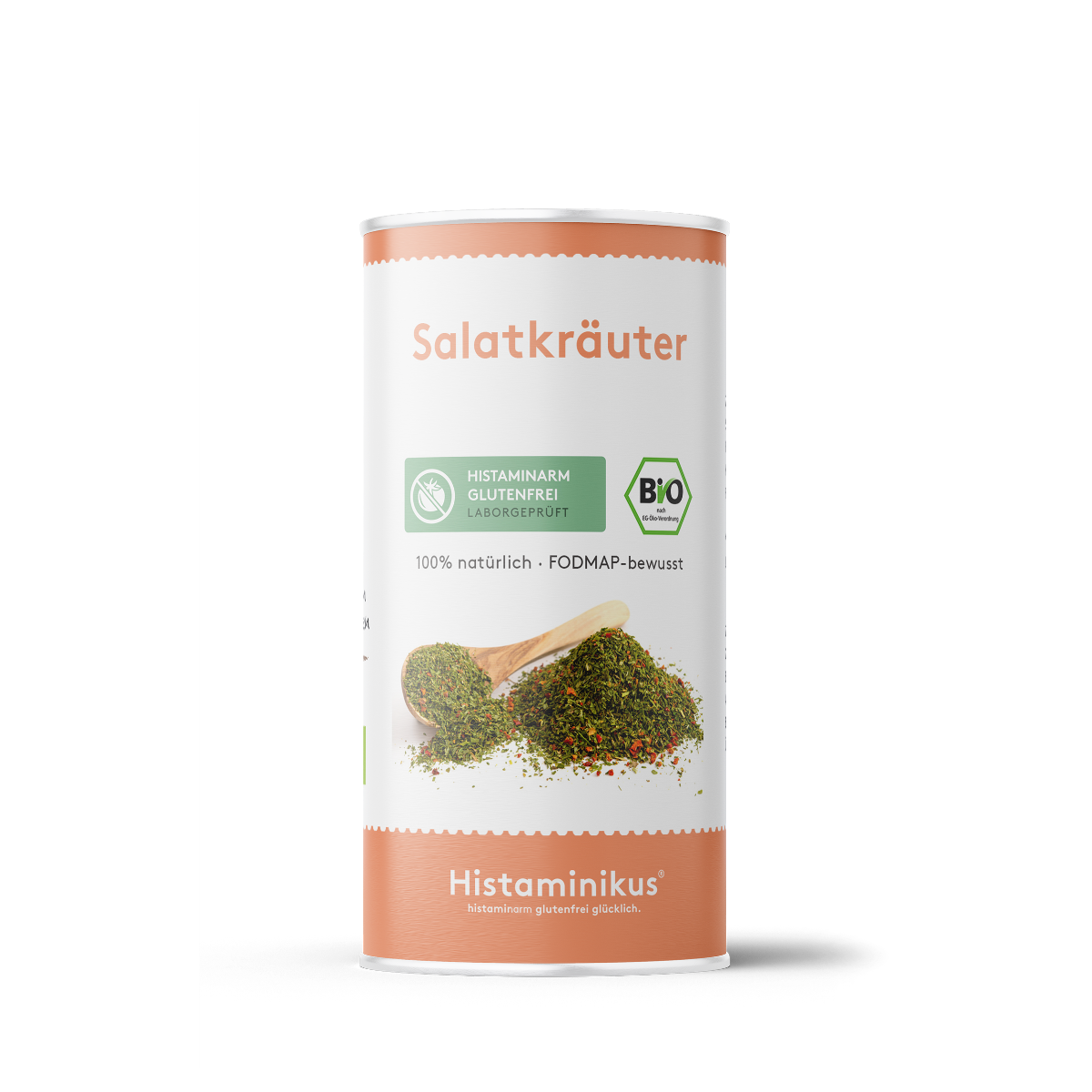
Histaminikus
Salad herbs organic
4.94 / 5.0
(31) 31 total reviews
Share
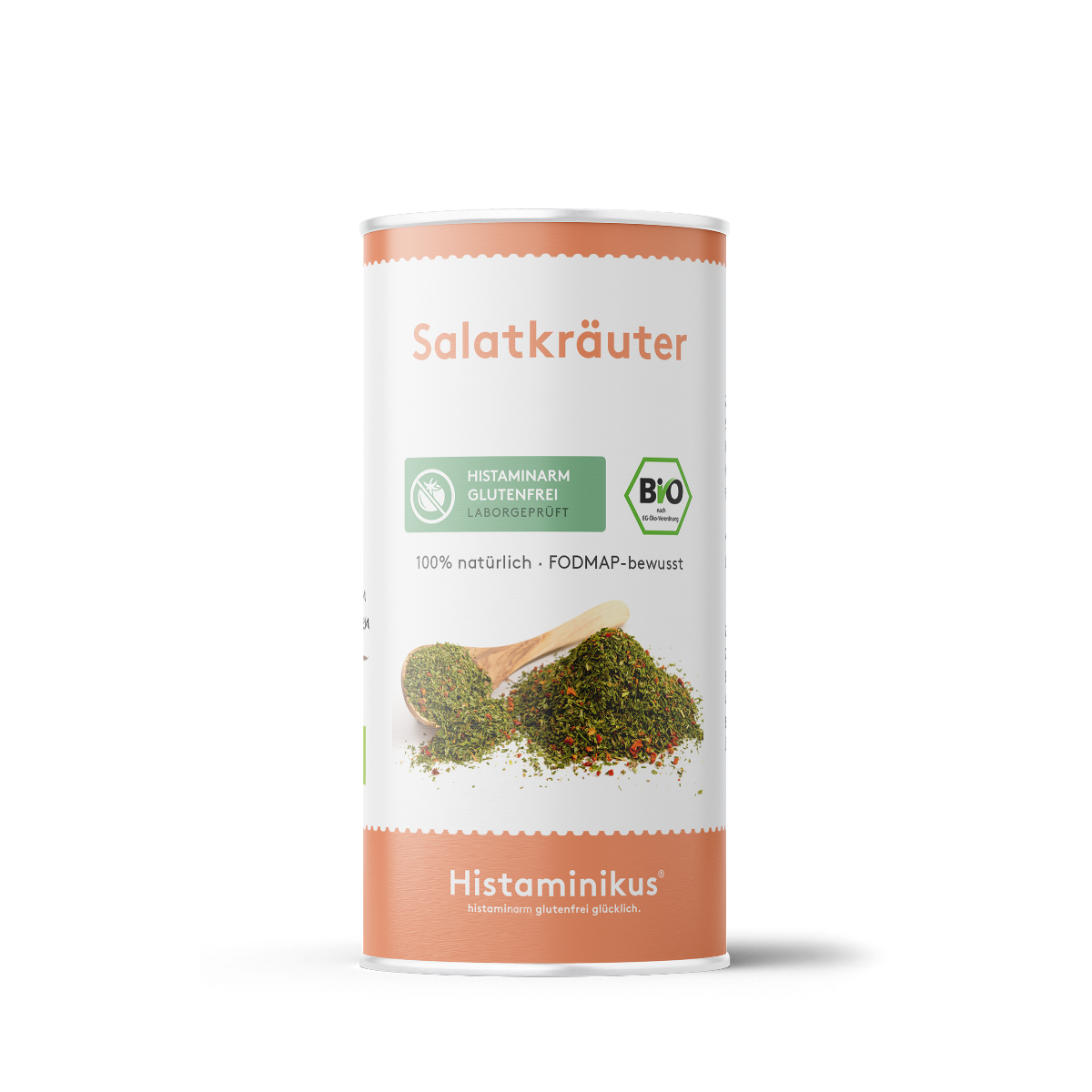

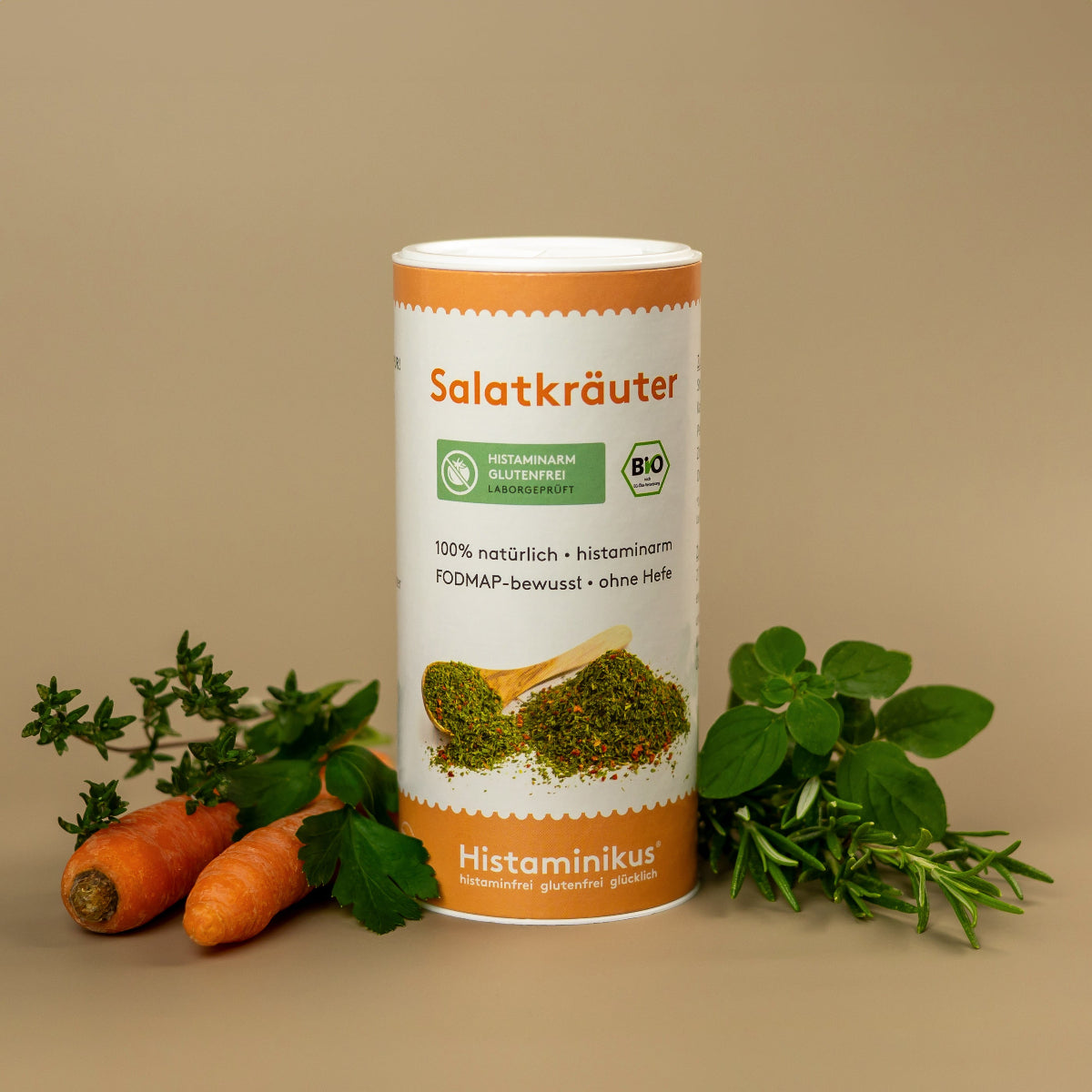
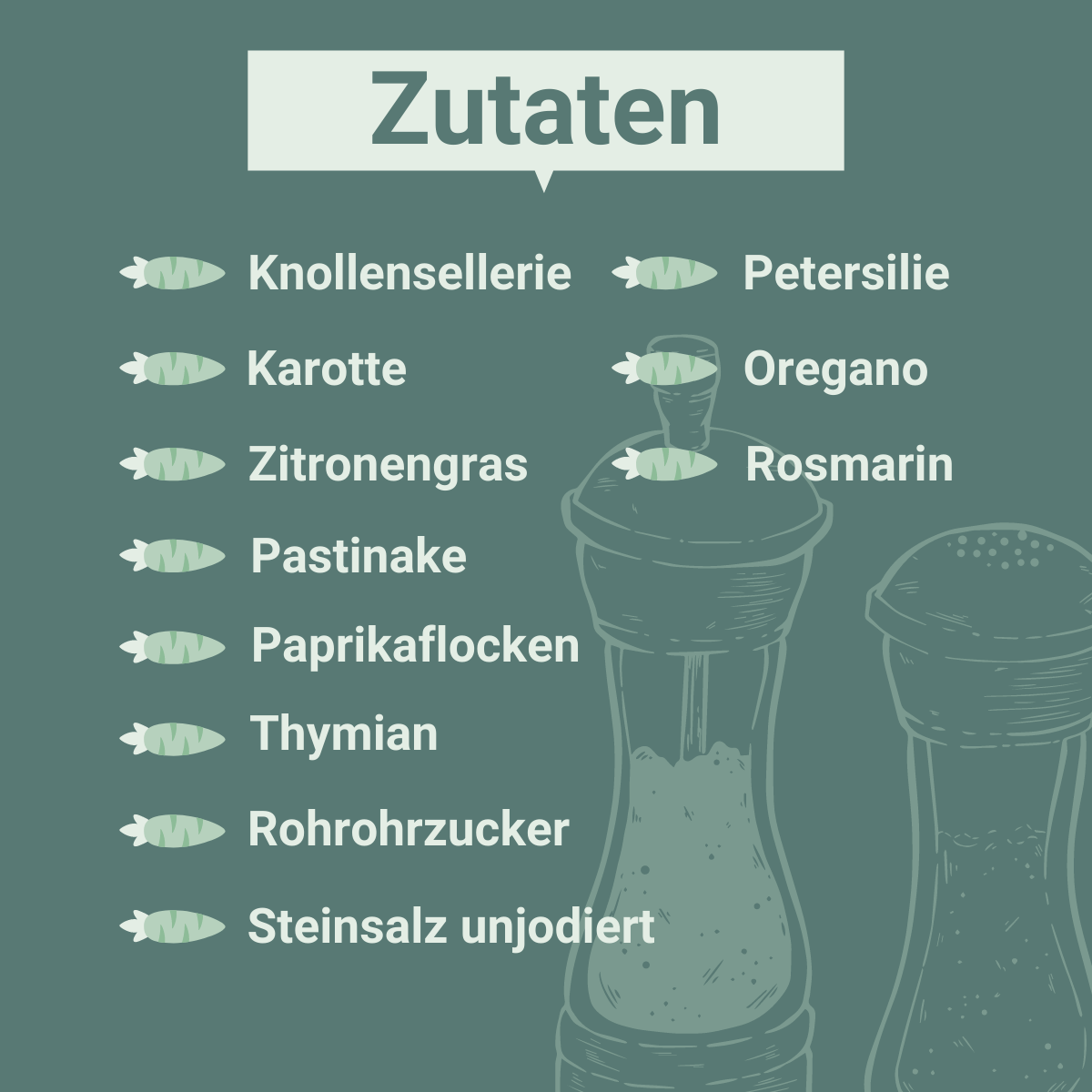


From those affected for those affected
We are Thomas and Michaela Zinser, founder of Histaminikus.
Because of the own histamine intolerance of Michaela and our son, we founded Histaminikus. The frustration does not find any suitable histamine food has spurred us to develop low -histamine food.
We would like to give you back a piece of quality of life. Feel free to look around with us.
Kind regards
Thomas and Michaela
